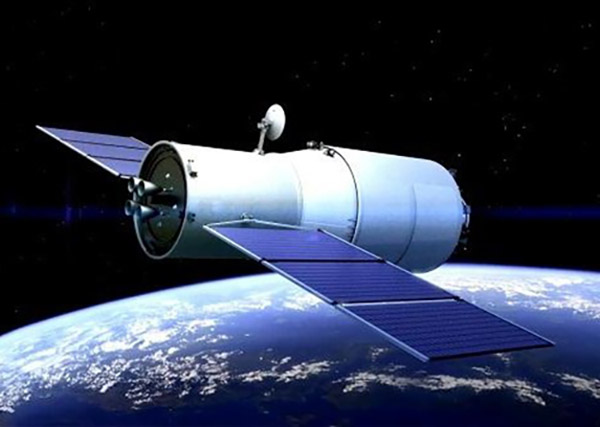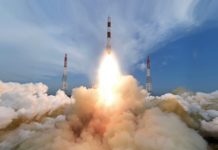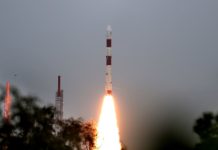Every month’s an exciting month for launches, but April and May 2017 are looking to be particularly action-packed for India and China.
In April, China is slated to launch its first unmarked cargo spacecraft, the Tianzhou 1, to its Tiangong-2 space laboratory. Later in May, India will probably launch its first indigenous cryogenic 3rd stage vehicle, the GSLV-III, and around the same time, Here are a few scheduled launches from India and China. Between the two, there will probably be some smaller launches that will boost each power’s connectivity and satellite navigations systems.
Here’s a list of slated launches from the two countries:
India
- PSLV-XL, launching Cartosat 2E (23 April)
Slated for 23 April, ISRO’s Cartosat-2E will be launched from Sriharikota on India’s Polar

Satellite Launch Vehicle (PSLV). With a mission duration of 5 years, Cartosat-2E will be placed in a sun-synchronous orbit and collect high-resolution satellite maps for the purpose of national development.
2. GSLV Mk.2, launching GSAT 9 (TBD)
Delayed from March and April 4, ISRO is planning to launch GSAT-9, a multi band communication and observation satellite, into geostationary orbit later this month. With an expected mission duration of 12 years, the satellite will be part of the GAGAN satellite-based augmentation system which currently utilizes 3 satellites.
3. GSLV Mk. 3 – GSAT 19 (20 May)
The launch of GSAT-19 is by far the most exciting of India’s scheduled launches, and is slated for the end of May.
The satellite itself is interesting, with its payloads consisting of several experimental technologies. Along with Ka and Ku-band payloads, it will carry a Geostationary Radiation Spectrometer (GRASP) to study space radiation.
But what everyone’s really waiting for with bated breath is the first ever official launch of the GSLV Mark III, also known as the LVM3. ISRO’s heaviest launch vehicle to date, the GSLV-III features India’s first domestically-developed cryogenic upper stage, known as C25. The launcher’s cryogenic stage was successfully tested earlier this year, on 25 January 2017, while previous tests proved the GSLV-III capable of serving a crew launch vehicle to space. The success of this launch means that India will be able to carry heavier payloads, up to 4000 kg, into the Geosynchronous Transfer Orbit (GTO), and possibly finally begin a manned mission.
China
- Long March 3B – Shijian 13 (7 April)
Shijian 13, scheduled to launch this month, is the first of six high throughput communication satellites that will enable internet connectivity on airplanes and high-speed trains. Developed by the China Academy of Space Technology, it will be launched into Geostationary Orbit and has an expected mission duration of 15 years. The satellite arrived at the Xichang Satellite Launch Centre on March 13, and will be launched on the Long March 3B (Changzheng 3B).
2. Long March 7 – Tianzhou 1 (23 April)
The launch of Tianzhou-1 is probably the most anticipated of China’s launches so far this year. The Tianzhou-1 is China’s first cargo spacecraft, and will dock at China’s space laboratory module Tiangong-2, which was launched on 15 September 2016.
Developed from Tiangong-1, China’s first space lab, the Tianzhou-1 is an unmanned automated cargo spacecraft that will function as the main cargo transportation for China’s envisioned space station.
Amidst fears of the International Space Station’s (ISS) uncertain future, the successful launch of Tianzhou-1 is certain to garner huge international response. China National Space Administration (CNSA) has created much hype around this spacecraft, having transported it to the Wenchang Space Launch Centre earlier in March and allowing members of the public to view its journey.







